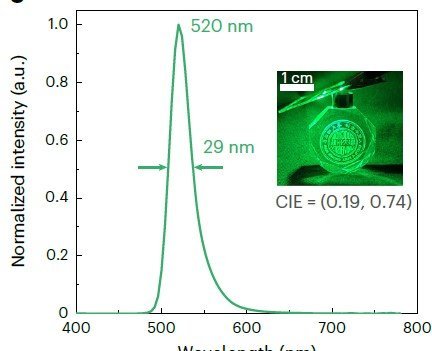Ultrapure green organic light-emitting diodes based on highly distorted fused π-conjugated molecular design
Fan, XC., Wang, K., Shi, YZ. et al.
Nat. Photon. (2023). https://doi.org/10.1038/s41566-022-01106-8
Researchers developed a new ultrapure green emitter called DBTN-2 for use in organic light-emitting diode (OLED) displays, which has a highly efficient operation due to the introduction of multiple carbazole moieties resulting in a high density of triplet states and a fast rate of reverse intersystem crossing.
An OLED using DBTN-2 as an emitter demonstrated a high photoluminescence quantum yield, strong horizontal dipole orientation, and excellent external quantum efficiency of 35.2% with suppressed efficiency roll-off, meeting commercial requirements for a green OLED display.
The obtained PL intensity angle-dependent patterns were analysed using Setfos with refractive index n, extinction coefficient k values of SF3-TRZ at 520 nm (peak wavelength of DBTN-2) as basic information for simulation.

